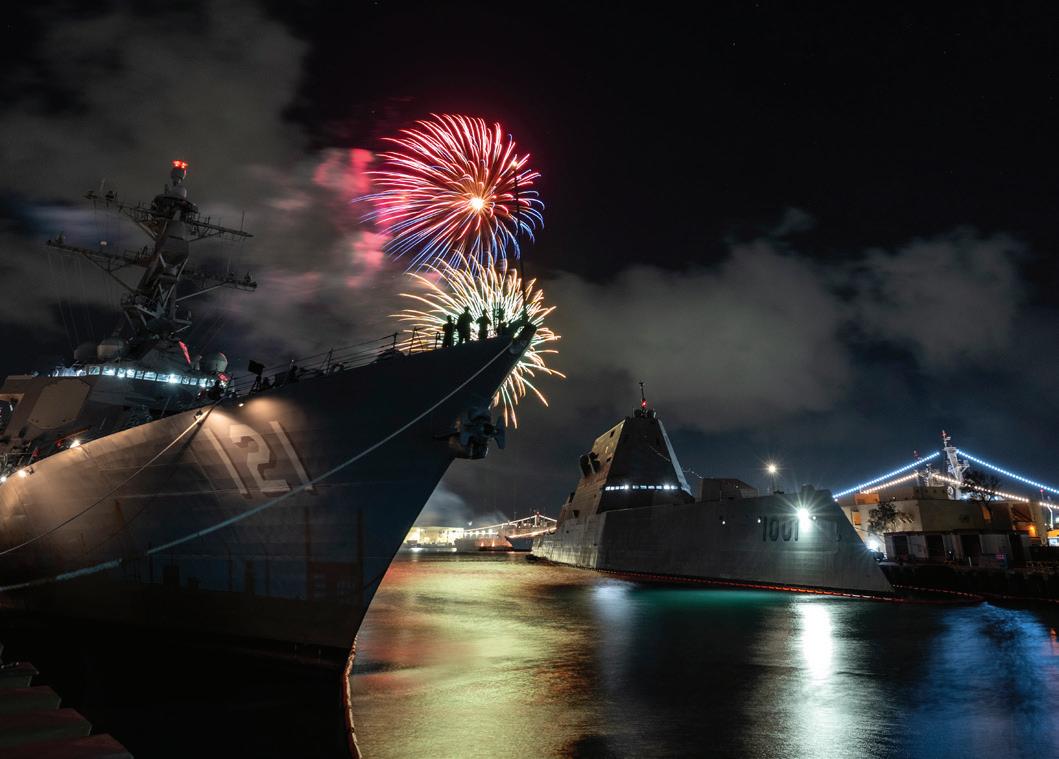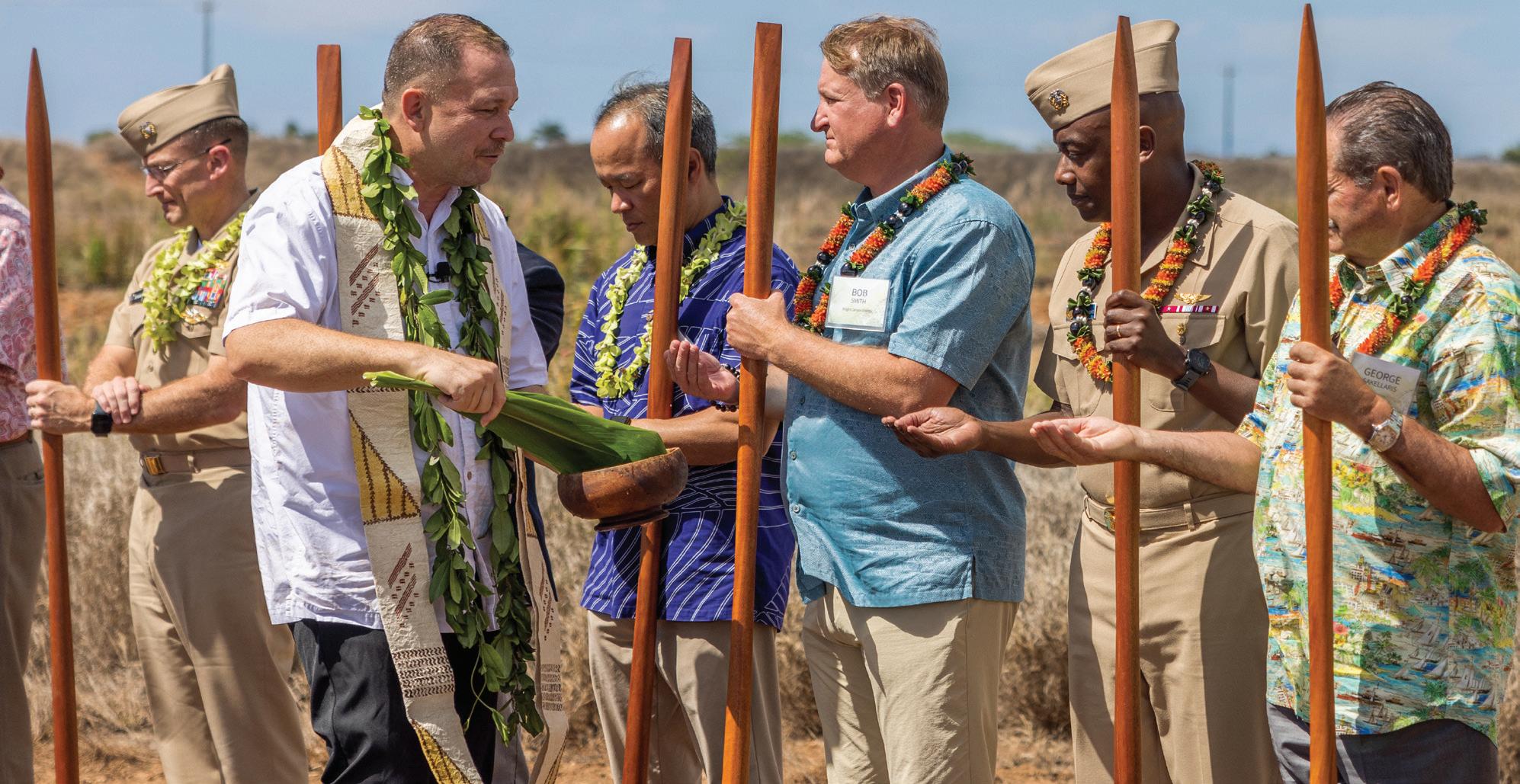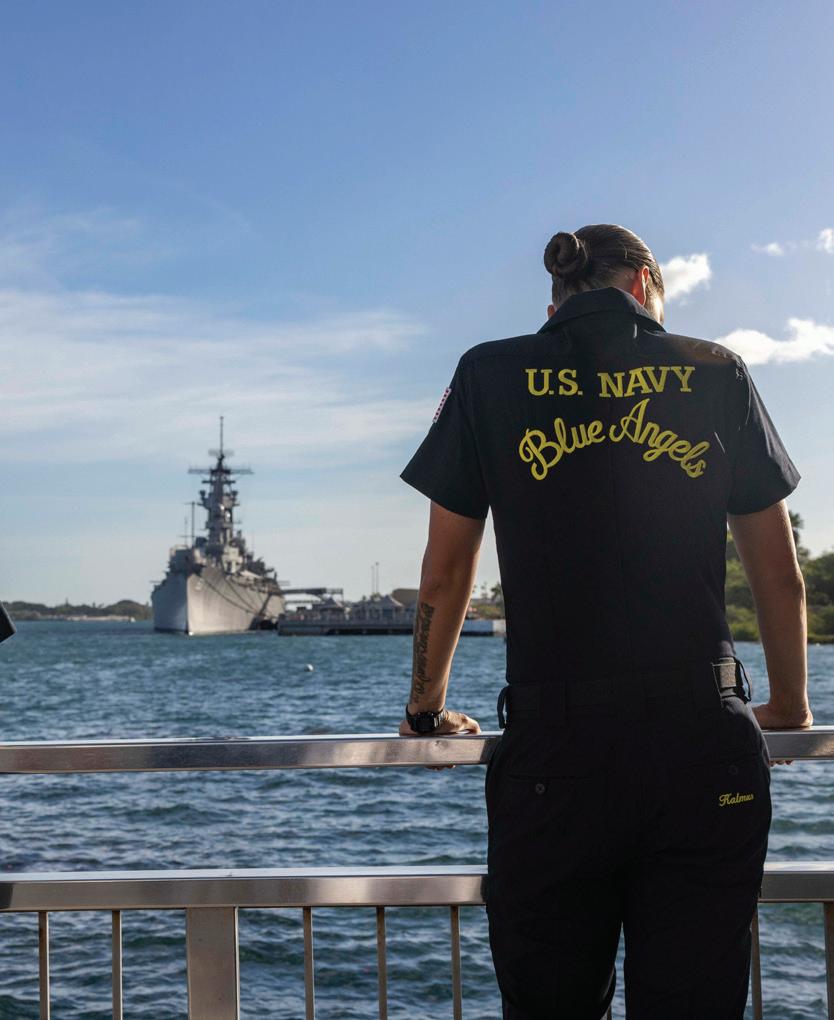
6 minute read
Traffic up here is THICK Albatross The Layson
When thinking of an albatross, some people may remember the old 1977 Disney animated film “The Rescuers” which depicted two mice, Bernard and Miss Bianca, that worked for the Rescue Aid Society whose mission is to save those in need. In order to reach Devil’s Bayou, Louisiana, from New York City to save an orphan girl from kidnapping, the rescuers received a flight from an overzealous albatross pilot, Orville. While Orville was a pilot in the movie, meshing albatross with aircraft in real life is a major hazard. Even for Orville himself, he ran into some trouble trying to land while he communicated with the control tower at the airport saying, “Look, bud. Am I clear to land? Traffic up here is thicker thanWow! Dab-blast, you dirty road-hog!”
This hazard between birds and aircraft is one that the Navy is trying to prevent through the Bird Aircraft Strike Hazard (BASH) program. Navy bases around the world are located in areas where wildlife hazards present significant risks for air and ground strikes. Such strikes can result in potential loss of life for flight crews or ground personnel, costly aircraft damage, and degradation of mission capability for Navy installations and their customers. This program identifies aviation safety hazards and effectively mitigates the associated risks.
Advertisement
Here in the Hawaiian Islands, Laysan Albatross (known in Hawaiian as moli) are the most common species of albatross. With a wing span of just over six feet and weighing up to nine pounds, it is very obvious why these birds can become both a danger to aircraft and themselves if they get too close.
The environmental team at Pacific Missile Range Facility (PMRF), Barking Sands, works with the BASH initiative in order to conduct the annual Laysan Albatross Translocation Program. This program conducts searches for albatross eggs on the airfield and other hazardous areas of the testing and training facility in order to find them safer homes on other parts of the islands of Kauai or Oahu.
This year, PMRF worked with many institutions, including Pacific Rim Conservation (PRC), Kilauea Point National Wildlife Refuge (KPNWR), U.S. Department of Agriculture (USDA) Wildlife Services, as well as private properties on the north shore of the island. PMRF has been participating in this translocation project since 2005, with the sites varying each year.

“The long-term egg translocation program is a success for partnerships at PMRF,” said Brooke McFarland, PMRF’s natural resources manager. “Although one of the main goals of the project is to reduce the number of albatross nesting at PMRF, this project also demonstrates the Navy’s commitment to working with communities to preserve the unique ecosystem of Kauai.”

Historically, the Mana Plain, where PMRF is located, was a wetland used by a variety of bird species, including albatross. They prefer the open windswept location as it is an easy place to land and take off. They also tend to return to where they were born to nest due to their extremely acute sense of direction.
Egg collecting is one way to reduce the number of birds at PMRF without reducing the overall population. Albatross tend to be site specific when finding places to nest. However, they aren’t particularly attached to an egg that they lay. The parents will raise whatever chick comes out of the egg as long as it is hatched in their nest.
“It is important for PMRF to move albatross when they are still eggs in order for the chicks to imprint on other locations and not return to PMRF,” stated McFarland. “It will take some time, since they live so long, but eventually, the population here will decrease.”
Albatross can often live to over 70 years old and will mate for life. They reproduce about one egg a year from around the time they are seven years old. For this reason, the translocation of eggs will continue to be a long term project that needs careful attention every year.
“Their population is naturally very slow to respond to change,” remarked McFarland. “In the meantime, PMRF uses other measures such as capturing and moving adults away from the airfield to reduce the risk to aircraft.”
The process begins with the collection of eggs. Sailors and other PMRF employees gather to conduct the albatross egg sweeps throughout the breeding season. The volunteers split into multiple groups and search through vegetative areas on PMRF’s training range in search of albatross and their nests. This year, 67 eggs were found on the installation as a result of executing these sweeps.
After the eggs are collected, they are taken to be incubated until the “swap day.” Incubators maintain a consistent temperature and humidity just right for the eggs to continue developing. This year, PCR came to PMRF to test which of the eggs are viable, meaning verifying if the egg is fertilized and developing an embryo, or if they are considered a dead egg. They do this through a process called candling.
“Eggs are ‘candled’ with a bright light to see through the shell and see if the embryo is alive,” McFarland explains. “You can see clear blood vessels and some movement in live embryos, and dead or infertile eggs look empty or blurry. Sometimes, especially when the egg is newly laid, it can be very difficult to tell if it is viable. This is why we have an expert make the final determination.”
The viable eggs will be collected and passed off to organizations like PRC and KPNWR to bring to the north shore of Kauai. This year, 27 eggs from PMRF were considered viable.
Once at the north shore, these scientists conduct the same candling technique to determine which eggs on the north side are viable. The ones that are determined as not viable are switched with the eggs from PMRF, thus allowing a north shore albatross parent to raise the chick.
“Translocated eggs and chicks are monitored until they fledge,” continued McFarland. “Over the course of the program, over 700 viable albatross eggs have been moved from PMRF to the north shore of Kauai or Oahu. While not all of those would have fledged, the result is potentially hundreds of albatross returning as adults to other high-island colonies rather than PMRF, which is a win for the species and for PMRF.”


Eggs that are determined to be not viable are not discarded or destroyed. They are actually sent to the National Institute of Standards and Technology as well as the Seabird Tissue Archival and Monitoring Project in order to retain infertile eggs as part of an effort to study environmental quality over time and regions. For example, some of the eggs are sampled for contaminants and others maintained as part of a long-term collection for research purposes.
“We appreciate the Navy’s commitment to this project,” commented Dr. Eric VanderWerf, director of science and founder of PRC. “It was a pleasure to work with the environmental team. Everything went smoothly. We have been doing this project for a number of years and everybody knows how things work.”
Translocating the eggs offers them a better chance of survival, but there are still dangers from other environmental factors, such as predators trying to eat the eggs, longline fishing and plastic pollution. Even larger issues are facing the population due to climate change. If nesting on low lying island areas, they become vulnerable to storm surges and sea-level rise, which are only becoming more unpredictable due to climate change.
“This project helps to increase the Laysan Albatross population on Kauai by producing additional offspring,” said VanderWerf. “The species is threatened by sea level rise because most of its nesting areas in the Northwestern Hawaiian Islands are just a few feet above sea level. The nesting areas on Kauai are higher in elevation and will be safe from sea level rise.”
Translocating the eggs from PMRF to the north shore of Kauai or Oahu allows for the high-island population to persist, which will likely be important to the species in the future. The primary nesting spot for the majority of these birds is on Midway Atoll, approximately 1,200 miles west of Kauai. If sea level rise makes that island uninhabitable, the next primary spot for the birds to nest is Kauai.
“They are already experiencing the effects of climate change,” VanderWerf elaborated. “Some of their nesting areas have already washed away and others are under threat. Climate change and sea level rise are not something that might happen someday, it is already happening.”
The work to preserve these native species is instrumental in the overall wellbeing of not just the island, but the health of the entire ecosystem for generations to come.


Albatross are truly a wonder to observe. It isn’t difficult to see why traditional Hawaiians revered albatross as master navigators with a strong tie to their homeland as they spend most of their lives at sea.
In the words of Miss Bianca to Bernard in “The Rescuers” when she delightedly sees Orville fly for the first time she exclaims, “Look! There he is! Doesn’t he fly beautifully? And you wanted to take the train, you ‘fraidy cat.”
For more information about PMRF’s environmental program, please call the Natural Resources Hotline at (808) 208-4416, or visit https://cnrh.cnic.navy.mil/Installations/PMRFBarking-Sands/














